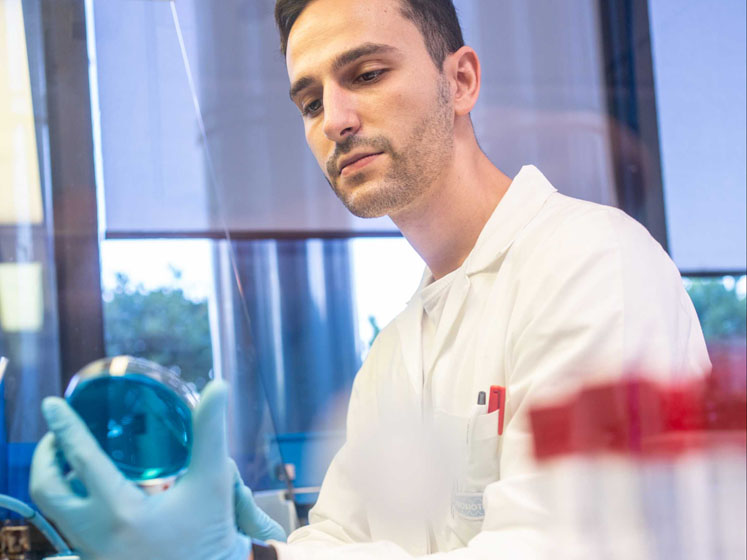Advances in technology and research are enabling the worldwide probiotics market to expand in lucrative new directions. And, as with anything new, there is a learning curve.
With 70-plus years of experience, probiotics industry leader Probiotical is committed to teaching US companies what they need to know about formulating with probiotics. That starts with understanding some key microencapsulation basics.
“The popularity of microencapsulated probiotics has grown. However, few companies are conducting clinical research to validate that the microencapsulated vehicle is doing what it’s supposed to do,” comments Probiotical Technical and Product Development Director Margherita Patrucco.
“Efficacy is not just measured by strain count,” she stresses. “Done right, microencapsulation helps to ensure that the probiotics open at the right moment in the gut, under the right conditions and survive at the right rate.”
Educating yourself can help you to bring better-performing, on-trend products to market. Here are five things you should know about probiotic microencapsulation.
The microencapsulation of probiotics improves viability and stability: To be effective and confer health benefits, probiotics must survive during processing and under shelf-life conditions as finished products.
They must then survive passage through the digestive tract, proliferate and colonise the gut. Usually, without microencapsulation, approximately 80% of probiotics die during the digestive process. Moreover, microencapsulation coats the probiotics with a barrier that significantly improves their viability and stability.

“Our proprietary microencapsulation technology was adapted from the pharmaceutical industry. After we develop the strains, we suspend them in air at a very specific temperature during which they are coated entirely with a plant-based lipidic matrix. As a result, the survival rate of our strains increases significantly.”
Microencapsulation can be cost effective: “Although it may seem that microencapsulation is costlier than uncoated forms, research confirms that our microencapsulation technology results in five times more survivability to the digestive process.
That equates to a reduction in dose for the finished product, which makes a strong difference,” says Patrucco.
A study published in Gut Microbes using Probiotical’s matrix demonstrated that colonisation was achieved with both microencapsulated and uncoated forms in the same time, although with a dosage five times lower for microencapsulated strains (2 billion cells/day of microencapsulated bacteria compared with 10 billion cells/day of the uncoated form).1
Not all microencapsulation systems are clinically tested: “Many companies do not properly test to validate efficacy in humans. Yes, most can confirm if you have live cells inside the microcapsules; but, just because a strain survives the vehicle — whether that’s capsule, liquid, chocolate, etc. — it doesn’t mean that it gets to where it’s needed inside the body,” Patrucco states.
“You also need to know: are the capsules opening at the right time? Are the probiotics alive when they are released and are they released in the amount needed to colonise and provide the proper benefit?”
She adds: “One of the benefits of working with Probiotical is that we routinely test our proprietary delivery system in a wide range of media. Our efficacy is backed by five clinical studies demonstrating the intestinal colonisation and its kinetics.”
Not all microencapsulation systems use the same matrices and processes: “Some other microencapsulation companies add different ingredients and molecules to their products. We keep it simple and as natural as possible.

We encapsulate just the probiotic. If you want to add something else to the formula, such as a prebiotic, it would be added separately.” Probiotical uses only allergen-free, food-grade lipids that are suitable for vegans and vegetarians. These lipids have been tested to ensure they are not toxic to the probiotics.
It’s possible to use probiotics even in difficult product matrices: “We have verified that our microencapsulation protects our probiotic strains in everything from complex formulations, capsules and suspensions to chocolate.
This broadens the possibilities of what can be achieved with probiotics.” Probiotical has more than 60 strains and 300 custom blends in production, with 2000 strains and 80 families of patents in its portfolio. Theirs was one of the first facilities specifically designed and built for the research, development and production of probiotic micro-organisms.
Each Probiotical product is backed by a huge amount of science — such as clinical trials or in vitro data — to demonstrate efficacy as well as quality and stability. The company also routinely combines probiotics with other ingredients such as prebiotics, botanicals and minerals while maintaining viability and confirming stability.
Reference
https://pubmed.ncbi.nlm.nih.gov/21637030/.




